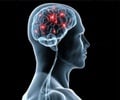Researchers in Germany have used a magnetic resonance imaging (MRI) technique called continuous arterial spin labeling (CASL) to map cerebral blood flow patterns

Schizophrenia is a chronic and severe brain disorder that affects approximately 2.4 million American adults, according to the National Institute of Mental Health. Symptoms can include hallucinations, delusions, disordered thinking, movement disorders, social withdrawal and cognitive deficits.
In the study, conducted at the University Hospital of Bonn in Germany, researchers used CASL MRI to compare cerebral blood flow in 11 non-medicated patients with schizophrenia and 25 healthy controls. The patient group included three women with a mean age of 36 years and eight men with a mean age of 32 years. The control group included 13 women (mean age, 29 years) and 12 men (mean age, 30 years).
The results revealed that compared to the healthy controls, the schizophrenic patients had extensive areas of hypoperfusion, or lower blood flow than normal in the frontal lobes and frontal cortex, anterior and medial cingulate gyri, and parietal lobes. These regions are associated with a number of higher cognitive functions including planning, decision making, judgment and impulse control.
Hyperperfusion, or increased blood flow, was observed in the cerebellum, brainstem and thalamus of the schizophrenic patients.
"Our CASL study revealed patterns of hypo- and hyperperfusion similar to the perfusion patterns observed in positron emission tomography (PET) and single photon emission computed tomography (SPECT) studies of schizophrenic patients," Dr. Scheef said.
Advertisement
"CASL MRI may allow researchers to gain a better understanding of schizophrenia," Dr. Scheef said. "In the long run, it may help to individualize and optimize treatment."
Advertisement
Source-Eurekalert
TAN















